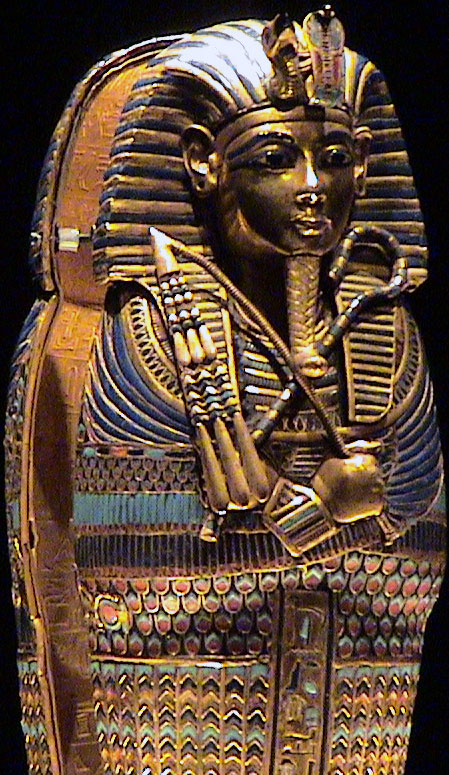crook and flail on:
[Wikipedia]
[Google]
[Amazon]
 The crook and flail (''heka'' and ''nekhakha'') were symbols used in ancient Egyptian society. They were originally the attributes of the
The crook and flail (''heka'' and ''nekhakha'') were symbols used in ancient Egyptian society. They were originally the attributes of the
 The crook and flail (''heka'' and ''nekhakha'') were symbols used in ancient Egyptian society. They were originally the attributes of the
The crook and flail (''heka'' and ''nekhakha'') were symbols used in ancient Egyptian society. They were originally the attributes of the deity
A deity or god is a supernatural being who is considered divine or sacred. The ''Oxford Dictionary of English'' defines deity as a god or goddess, or anything revered as divine. C. Scott Littleton defines a deity as "a being with powers greate ...
Osiris that became insignia of pharaonic authority. The shepherd's crook stood for kingship and the flail for the fertility of the land.
The earliest known example of a crook is from the Gerzeh culture (Naqada II), and comes from tomb U547 in Abydos Abydos may refer to:
*Abydos, a progressive metal side project of German singer Andy Kuntz
* Abydos (Hellespont), an ancient city in Mysia, Asia Minor
* Abydos (''Stargate''), name of a fictional planet in the '' Stargate'' science fiction universe ...
. By late Predynastic times, the shepherd's crook was already an established symbol of rule. The flail initially remained separate, being depicted alone in some earliest representations of royal ceremonial. Approximately by the time of the Second Dynasty the crook and flail became paired.
The only extant pharaonic examples of both the crook and flail come from the Tomb of Tutankhamun. Their staffs are made of heavy bronze covered with alternating stripes of blue glass, obsidian
Obsidian () is a naturally occurring volcanic glass formed when lava extrusive rock, extruded from a volcano cools rapidly with minimal crystal growth. It is an igneous rock.
Obsidian is produced from felsic lava, rich in the lighter elements s ...
, and gold, while the flail's beads are made of gilded wood.
Theories on significance
Traditionally crossed over the chest when held, they probably represented the ruler as a shepherd whose beneficence is formidably tempered with might. In the interpretation of Toby Wilkinson, the flail used to goad livestock, was a symbol of the ruler's coercive power: as shepherd of his flock, the ruler encouraged his subjects as well as restrained them. Still another interpretation, byE. A. Wallis Budge
Sir Ernest Alfred Thompson Wallis Budge (27 July 185723 November 1934) was an English Egyptologist, Orientalist, and philologist who worked for the British Museum and published numerous works on the ancient Near East. He made numerous trips ...
, is that the flail is what was used to thresh grain.
References
See also
* Sekhem scepter * Was scepter * Pharaoh-seated, with flail & red crown (hieroglyph) {{Ancient Egyptian religion footer, state=collapsed Ancient Egyptian symbols Regalia Pharaohs Osiris Gerzeh culture